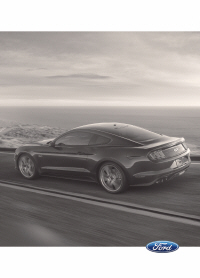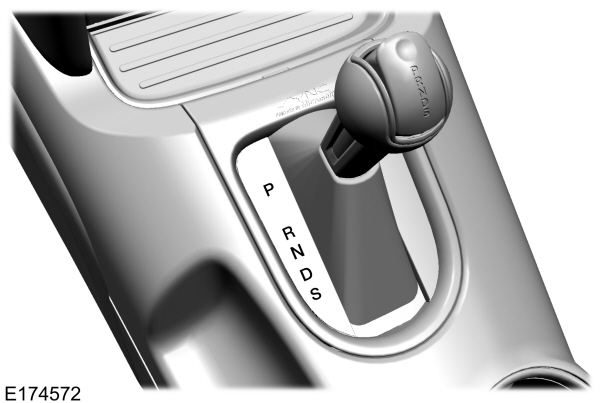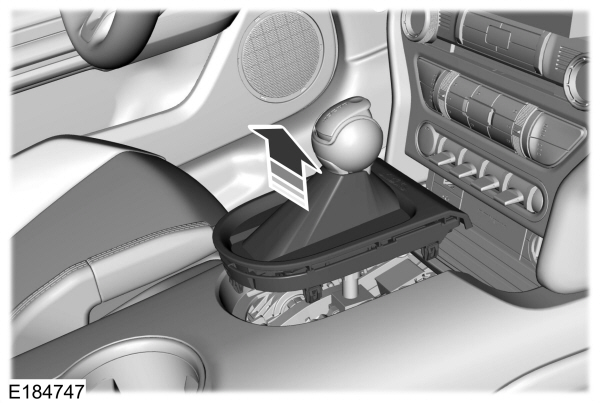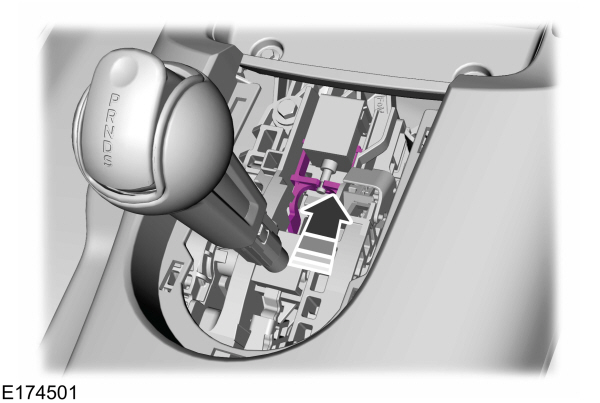This view of the Owner's Manual contains the very latest information, which may vary slightly from the printed Owner's Manual originally provided with your vehicle. It may also describe content that is not on or operates differently on your vehicle. Please consider the Owner's Manual originally provided with your vehicle as the primary source of information for your vehicle.

The information contained in this publication was correct at the time of release.In the interest of continuous development, we reserve the right to change specifications, design or equipment at any time without notice or obligation.No part of this publication may be reproduced, transmitted, stored in a retrieval system or translated into any language in any form by any means without our written permission.Errors and omissions excepted.
Copyright © 2024 Ford Motor Company
Automatic Transmission





 WARNING:
Always fully apply the parking brake and make sure you shift into park (P). Failure to follow this instruction could result in personal injury or death.
WARNING:
Always fully apply the parking brake and make sure you shift into park (P). Failure to follow this instruction could result in personal injury or death. WARNING:
Do not apply the brake pedal and accelerator pedal simultaneously. Applying both pedals simultaneously for more than a few seconds will limit engine performance, which may result in difficulty maintaining speed in traffic and could lead to serious injury.
WARNING:
Do not apply the brake pedal and accelerator pedal simultaneously. Applying both pedals simultaneously for more than a few seconds will limit engine performance, which may result in difficulty maintaining speed in traffic and could lead to serious injury. WARNING:
When your vehicle is stationary, keep the brake pedal fully pressed when shifting gears. Failure to follow this instruction could result in personal injury, death or property damage.
WARNING:
When your vehicle is stationary, keep the brake pedal fully pressed when shifting gears. Failure to follow this instruction could result in personal injury, death or property damage. |
Note:
You may not be able to shift out of park (P) unless the intelligent access key is inside your vehicle.
Automatic Transmission Position Indicators
The instrument cluster displays the current position.

Note:
The position could illuminate on the transmission selector.
Understanding the Positions of Your Automatic Transmission
Putting your vehicle in gear:
- Fully press down on the brake pedal.
- Press and hold the button on the top of the gearshift lever.
- Move the gearshift lever into the desired gear.
- Release the button and your transmission remains in the selected gear.

Transmission Selector Positions
The instrument cluster displays the current gear.
Park (P)
This position locks the transmission and prevents the rear wheels from turning. Come to a complete stop before putting your vehicle into and out of park (P).
Reverse (R)
With the selector in reverse (R), your vehicle moves backward. Always come to a complete stop before shifting into and out of reverse (R).
Neutral (N)
With the selector in neutral (N), you can start your vehicle and it is free to roll. Hold the brake pedal down when in this position.
Drive (D)
Drive (D) is the normal driving position for the best fuel economy. The overdrive function allows automatic upshifts and downshifts through all gears.
Sport (S)
Putting your vehicle in sport (S):- Provides additional engine braking and extends lower gear operation to enhance performance for uphill climbs, hilly terrain or mountainous areas. This increases engine RPM during engine braking.
- Provides additional lower gear operation through the automatic transmission shift strategy.
- Provides gear upshifts and downshifts more quickly at higher engine speeds.
Manually Shifting Gears (If Equipped)
Shifting Using Paddle Shifters
The instrument cluster displays the current gear. The current gear flashes when your vehicle cannot shift into the requested gear. Your vehicle will not shift if the requested gear raises or lowers the engine speed beyond the limit.
Your vehicle could shift when you fully press the accelerator or brake pedal.
Note:
Prolonged driving with high engine speed could cause vehicle damage not covered by the vehicle warranty.
Note:
Drive modes could affect when the vehicle shifts into the requested gear.

Manually Shifting Gears in Drive (D)
Use this feature when overtaking another vehicle, or to temporarily change gear.
- Pull any paddle to switch the feature on.
- Pull the right (+) paddle to upshift.
- Pull the left (-) paddle to downshift.
- Hold the (+) paddle for a few seconds to switch the feature off.
Note:
The feature switches off after a short period of time if you do not pull either paddle.
Manually Shifting Gears in Sport (S)
Use this feature for engine braking on hilly or mountainous roads, or to select a specific gear.
- Pull any paddle to switch the feature on.
- Pull the right (+) paddle to upshift.
- Pull the left (-) paddle to downshift.
- Hold the + paddle for a few seconds to switch the feature off.
Transmission Not in Park (P) Audible Warning
Sounds if any of the following occur:
- You switch your vehicle off before shifting into park (P).
- You open the driver door before shifting into park (P).
Brake-Shift Interlock
 WARNING:
Do not drive your vehicle until you verify that the stoplamps are working.
WARNING:
Do not drive your vehicle until you verify that the stoplamps are working. WARNING:
When doing this procedure, you need to take the transmission out of park (P) which means your vehicle can roll freely. To avoid unwanted vehicle movement, always fully apply the parking brake prior to doing this procedure. Use wheel chocks if appropriate.
WARNING:
When doing this procedure, you need to take the transmission out of park (P) which means your vehicle can roll freely. To avoid unwanted vehicle movement, always fully apply the parking brake prior to doing this procedure. Use wheel chocks if appropriate. WARNING:
If the parking brake is fully released, but the brake warning lamp remains illuminated, the brakes may not be working properly. Have your vehicle checked as soon as possible.
WARNING:
If the parking brake is fully released, but the brake warning lamp remains illuminated, the brakes may not be working properly. Have your vehicle checked as soon as possible. |
Use the brake shift interlock lever to move the gearshift lever from the park (P) position in the event of an electrical malfunction or if your vehicle has a dead battery.
Apply the parking brake and switch the ignition off before performing this procedure.

- Using a flat head screwdriver or similar tool, remove the chrome bezel and gearshift bracket at the base of the gearshift lever.

- Locate the white release lever and slide the lever forward when pulling the gearshift lever out of the park (P) position and into the neutral (N) position.
- Reinstall the chrome bezel and the gearshift bracket.
- Start your vehicle and release the parking brake.
Note:
If you use this procedure, contact an authorized dealer as soon as possible.
Note:
For some markets, this feature is disabled.
Automatic Transmission Adaptive Learning
We design this feature to increase durability and provide consistent shift feel over the life of your vehicle. A new vehicle or transmission may have firm or soft shifts. This operation is normal and does not affect the function or durability of the transmission. Over time, the adaptive learning process fully updates transmission operation.
If Your Vehicle Gets Stuck in Mud or Snow
If your vehicle gets stuck in mud or snow, you could rock it out by shifting between forward and reverse gears, stopping between shifts in a steady pattern. Press lightly on the accelerator in each gear.
Note:
Do not rock your vehicle if the engine is not at normal operating temperature or damage to the transmission could occur.
Note:
Do not rock your vehicle for more than a minute or damage to the transmission and tires could occur, or the engine could overheat.
- Please note that Ford will not respond to individual feedback.
- Please provide detailed feedback regarding any inaccuracies in the content or any missing content in the Owner's Manual.
- Your feedback will be investigated, and any necessary changes will be updated in the online Owner's Manual.
Your input is valuable in helping us improve our Owner's Manual. Thank you for taking the time to provide your feedback.
